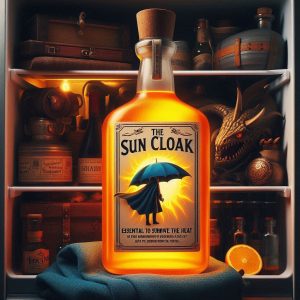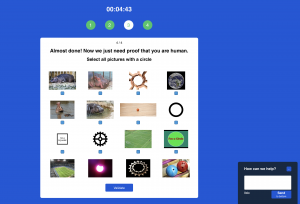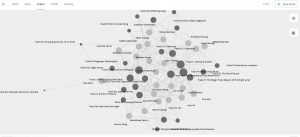Link 1: Shannon Wong
Shannon’s final project was a tutorial on Microsoft Excel. She explained the history of spreadsheets, followed by an introduction to Excel and applications using a set of data created by our class. She chose to create her project as a video, which allowed both audio and visual to explain her content. As someone relatively unfamiliar with Microsoft Excel, I found the video and Shannon’s method of communication quite helpful. She circled or made arrows point to a specific cell she was talking about, and shared the screen recording of how she navigated the program. Her narration helped me to understand how she handled the data, and why she chose to create a new table and reorganize the cells.
Microsoft Excel was not something that immediately came to mind for me when I thought of communication technology. Mostly because it is not a tool that is used regularly in my practice. However, after hearing Shannon during our class Zoom meeting about her background in accounting – it makes total sense as charts and spreadsheets are the main methods of communication for people who work with numbers. It helped me to broaden my definition of communication technology.
Link 2: Steve Acree
Steve’s final project was on e-books and e-readers. His podcast explains the emergence of digital text, the resulting transformation of the literary world and its impact on authorship and sales. He provides personal examples such as how going digital has lightened his suitcase for the vacation but he has not yet determined how he feels about watching his son use his phone for reading rather than paperback. He also briefly mentions accessibility, which connects to my project on text-to-speech software. Using podcasts as a platform for this project was a good choice as it felt like I was listening to an episode of an audiobook.
I am in a similar boat as Steve (if not behind in keeping up with the trend). I still haven’t jumped on the e-book/e-reader yet. While I see the benefit of an e-reader and the compactness of it all, I still prefer paperback copies and the feeling of turning a page when I’m reading. On the other hand, I prefer e-books on mobile devices when it comes to school and textbooks. Mostly because I prefer not carrying around heavy textbooks but also because I can highlight, search and quickly skip to content with a simple click of a button. For me, it comes down to the intention of reading – whether it is for searching and gathering information or leisurely reading for fun.
Link 3: Matt Huang
Matt’s final project was on Automatic Writing Assessors (AWAs). In his essay, Matt discusses the history of AWAs, how machine learning technique is used to train AWAs and concerns that arise from this technological development. The essay format that Matt chose for the project effectively references and conveys the various research and information he gathered. Towards the end of his project, Matt mentions concern about how such a tool using an algorithm can perpetuate preexisting biases, as it could perpetuate the biases of the original examiners and suggests possible risk reduction through a mindful approach and transparency.
His paper reminded me of Acawriter, a writing analytics tool that provides automated feedback on academic writing. It is advertised to work by looking for hallmarks of good academic writing and giving feedback to improve drafts. It does not grade the writing or check for grammar but assesses the entire piece of writing. While it does seem harmless, I wonder what these “hallmarks of good academic writing” are and whose standards are implemented in providing the automated feedback. It also makes me wonder whether the creativity and personality of writers are dulled when we implement such tools.
Link 4: April Huang
April created an infographic poster on the use of iPads in early literacy. The visual media contained quotes and charts from various studies. I like her use of different icons and colours to emphasize a point and to divide the sections. In her project, April discusses the roots of literacy and the strengths and challenges of iPad use. Under ‘Why iPads?’, she lists 4 reasons supporting iPad use. However, given the limited space in this visual representation, the readers are not given any further information or background knowledge that supports these 4 points. There is a YouTube video at the bottom, which I think is a brilliant use of hyperlinks and technology beyond text. Unfortunately, the link isn’t working for me and I’m unable to utilize the feature.
I grew up with limited technology as a child simply because they were not invented yet. As a result, the introduction of the iPad in early literacy is unfamiliar to me. I think April brings up an interesting point, as I have never thought of the roots of literacy being digital. We often think of technology as being ‘good’ or ‘bad’ when the technology itself does not have such inherent quality. Her project helped me to reflect on how I choose to utilize technology and the personal responsibility that it comes with.
Link 5: Tina Wei
Tina’s final project was on the transformation of translation tools. She created a video outlining the history of translation tools and their implications in education. She brings up the idea of disruptive innovation and provides an example of the resistance against the use of calculators that emerged when it was first introduced. Similarly, translation tools pose a potential threat in the world of language learning. I agree that the ultimate goal of learning isn’t just to know the rules of how language is structured but to be able to use it for communication. But there must be a balance in how much students rely on technology. For example, students should be able to tell when the translation is done inaccurately rather than blindly following it. I also found it fascinating that the translation services started using linguistic data from search engines rather than adhering to a set of rules. Similar to my project on text-to-speech software, I think the introduction of artificial intelligence can significantly improve the quality of the technology.
I remember going to my elementary school with the paper dictionary as Tina mentioned. In grade 6, I remember feeling tech savvy after getting an electronic dictionary and carrying it everywhere in my pocket. Translation services have come a long way since then.
Describing Technologies: The Physician Chart Note. Can the author become the editor?
Link 6: Robyn Bernsen
Robyn’s final project was on electronic chart notes and electronic health records. She interviewed a family physician/assistant chief medical information officer for the latter half of the video. The podcast format allowed both Robyn and the interviewee to present the content in a question-and-answer format. The audio recording afforded features such as tones, nuances, and the natural flow of oral culture.
This was relevant and fascinating as it relates to my current field of practice. I used to work in a primary care team and remember the pressure of completing my SOAP notes during the clinical encounter while also maintaining a connection with the patient. One of the physicians on the team used to dictate all his notes. Another doctor had the help of an international graduate who would document on the computer while he assessed the patient and read out his findings. While I greatly appreciate the legibility of chart notes and prescriptions, I also wonder about the privacy of information that is being recorded and whether or not it affects what the physician chooses to document especially if done in front of the patient. Moreover, when these “data” are mined from chart notes, I wonder how the privacy of patients is protected and ensured to not perpetuate the potential bias that already exists.



